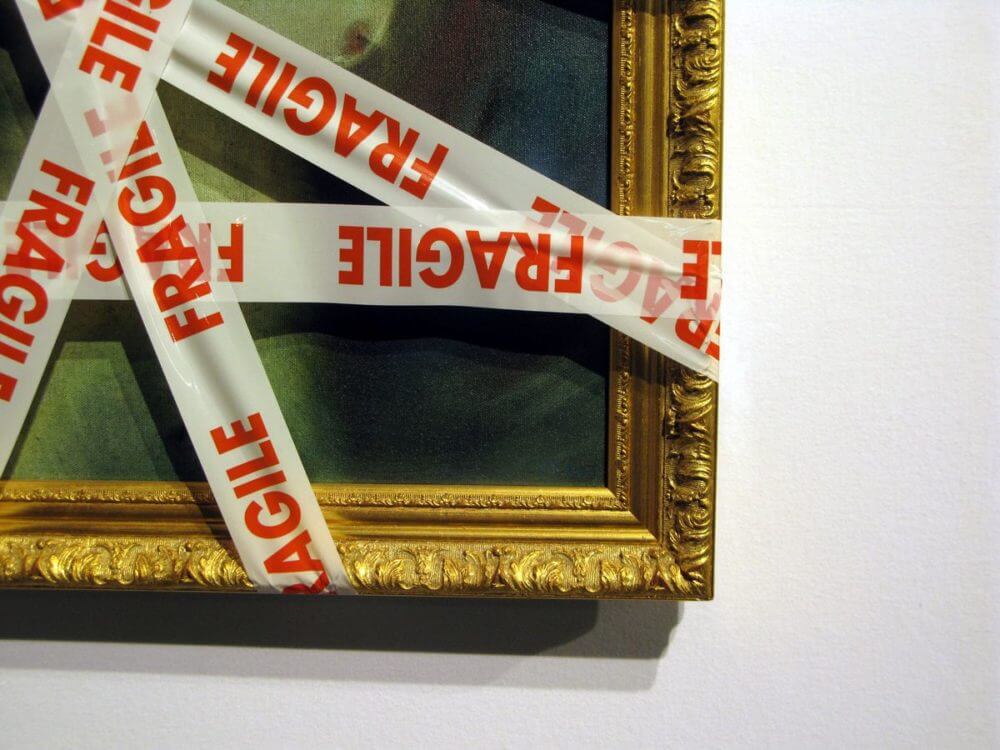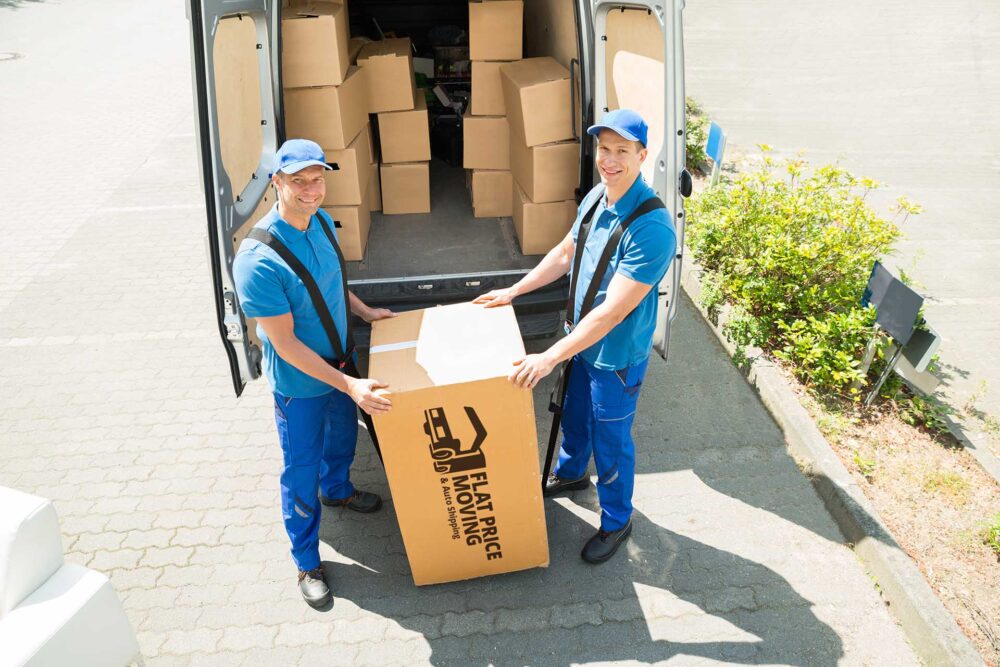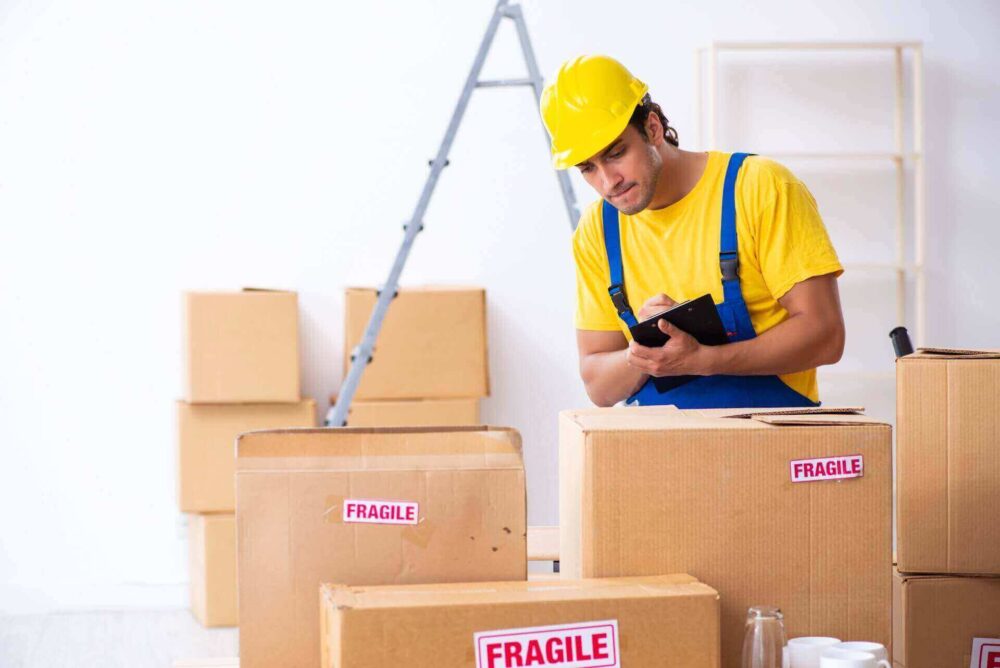Flat Price Auto Transport and Moving Explains How to Pack Paintings for a Move
Wrapping paintings for a move requires careful preparation and the right materials. Paintings are often valuable and fragile, making it crucial to handle them with care. So, how to pack paintings for moving to a new home? In this guide, Flat Price Auto Transport and Moving provides expert advice on this topic. By following these steps, you can protect valuable artwork and ensure it arrives at your destination in perfect condition.

The process of packing paintings for moving begins with gathering the necessary packaging supplies and preparing the artwork by cleaning the pieces and disassembling the frames when possible. Next comes the boxing up, when you have to be careful not to make any mistake that might damage the pieces. Of course, especially for more valuable paintings, the best option is hiring professional cross-country movers.
Gather the Right Packing Materials
Before you start figuring out how to pack art for moving, it’s essential to gather all the necessary materials. Having the right packaging supplies on hand will make the process smoother and help protect the artwork from damage.
The quality of the materials you use can significantly impact the safety of each painting during relocation to a new home. Investing in high-quality packing supplies is a wise decision that can save you from potential damage and costly repairs.
Essential Packaging Materials for Shipping Artwork
Having materials ready will ensure that you can pack paintings efficiently and securely. Proper materials are the first step in safeguarding artwork during the move. Ensure you have ample supplies to accommodate your entire collection, as running out of materials mid-packing can lead to improper packaging and an increased risk of damage. To pack paintings properly, you’ll need the following wrapping materials:
- Sturdy boxes,
- Bubble wrap,
- Packaging paper,
- Corner protectors,
- Packaging tape,
- Painter’s tape,
- Glassine paper,
- Foam boards,
- Markers.
Prepare the Painting Collection for Packing
Proper preparation is key to ensuring a painting is protected during shipping. Follow the following relocation tips to prepare paintings before packing them into boxes. This stage is crucial as it sets the foundation for how well paintings will withstand shipping. Taking the time to prepare the artwork carefully can prevent damage and make the packing process more efficient.
Clean and Inspect Paintings
Before packaging, gently clean each painting with a soft, dry cloth to remove any dust or debris. Dust and particles can cause abrasions on the surface during transport to a new state. Inspect each painting for existing damage and take note of any areas that need extra protection.
If your paintings are valuable or have historical significance, have them appraised and insured before the relocation. Documenting the condition of each painting before packaging and noting it in the relocation inventory can also be helpful for insurance purposes. If any damage occurs, you will have a record to reference.
Remove or Secure Frames if Possible
If possible, remove the paintings from their frames to reduce the risk of damage. Unframed painting is less likely to suffer from frame-related issues, such as corner dings or glass breakage. Wrap the frames separately in bubble wrap and packaging paper. Label each frame clearly to avoid confusion during unpacking.
If removing from frames is not an option, ensure the frames are secure and use corner protectors to safeguard the edges. Securing the frame ensures that it doesn’t shift or loosen during transit, which could damage the painting inside. Use painter’s tape to secure any loose parts of the frame or glass, as this tape can be removed without leaving residue.

Pack the Art Collection – A Step-by-Step Guide on How to Pack Paintings
So, how to pack framed pictures for moving? With materials ready and collection prepared, it’s time to start wrapping. Follow these steps to ensure your belongings are well-protected. Proper packing techniques are crucial to prevent damage. Taking the time to pack each painting carefully can make a significant difference in their condition upon arrival to a new city.
Step 1 – Wrapping Each Painting
Start by laying a piece of glassine paper over the front of the painting to protect the surface. Glassine paper is smooth and glossy, which prevents it from sticking to the paint or leaving any residue. Next, wrap the painting in bubble wrap, ensuring the entire surface is covered.
Bubble wrap provides cushioning and protects against shocks and impacts.
Secure the bubble wrap with tape, but be careful not to let the tape touch the painting directly.
Direct contact with tape can damage the surface of the painting.
Make sure the bubble wrap is snug but not too tight to avoid putting pressure on the canvas.
Step 2 – Using Foam Boards for Extra Protection
Place foam boards on both sides of the wrapped painting to add rigidity and protect against impacts. Foam boards act as a barrier against pressure and help maintain the shape of the packaging. Tape the foam boards together to create a secure package.
This extra layer will help prevent damage from bumps and drops during transportation. Foam boards also provide a sturdy structure that prevents bending or warping of the painting during transit. Ensure that the foam boards are large enough to cover the entire painting, including the edges.
Step 3 – Boxing Up the Artwork
Choose a sturdy box that is slightly larger than a wrapped painting. The best-sized box should provide enough space for additional padding but not so much that the item can move around. Line the bottom of the box with packing paper or bubble wrap for cushioning. This initial layer of padding absorbs shocks and prevents direct contact between the painting and the box.
Place the painting in the box and fill any empty spaces with packaging paper to prevent movement. Secure the painting in place to avoid shifting during transit, which can cause damage. Seal the box with tape, label it with the contents, and write “Fragile Item” to ensure careful handling. Proper labeling is crucial for ensuring that movers handle the box with the necessary care and move it safely.

Tips on Packing Multiple Paintings Together
If you have several paintings to relocate, you can pack them together to save space and materials. However, it’s crucial to ensure each painting is adequately protected to avoid damage. The relocation hack for packing multiple paintings in one box is careful layering and sufficient padding between each piece.
Create Layers of Protection
Wrap each painting individually as described above. Once all paintings are wrapped, layer them in the box, with foam boards or cardboard pieces between each layer for added protection. Each layer should act as a buffer, preventing direct contact between paintings. Fill any gaps with packing paper to prevent shifting during transit.
Proper padding is essential to keep the paintings from moving and bumping into each other. Seal the box securely and label it appropriately. Indicate that the box contains multiple fragile items to ensure extra care during handling.
Storage Service
Knowing what kind of surprises cross country move may hold, we offer 30 day free storage for belongings at the origin state.
Read moreAuto-Transport
If your first concern is having your vehicle transported safely and efficiently, enclose shipping is the way to go.
Read moreMoving Insurance
Flat Price Moving and Auto Transport Company offers moving insurance to cover potential damages
Read moreTips on Transporting the Art Collection
Once paintings are packed, it’s important to transport them carefully. Whether you’re moving them yourself or hiring a relocation company (which is the recommended method for shipping artwork), proper handling methods are essential to maintain the paintings’ integrity.
Handle Boxes With Care
When loading the boxes into the moving truck, place them upright and avoid stacking heavy items on top of them. Positioning the boxes upright reduces the risk of crushing and ensures better stability. Secure them in place to prevent movement during transit and use straps or bungee cords to keep them from shifting.
If possible, transport paintings in a climate-controlled environment to protect them from extreme temperatures and humidity. Paintings can be sensitive to temperature and moisture changes, which can cause warping, cracking, or fading.

Unpack and Reassemble Paintings
Once in a new home, it’s time to unpack and reassemble paintings. Take the time to do it correctly, as proper unpacking after relocation is just as important as packing to avoid any last-minute damage.
Unpack With Caution
Carefully open the boxes and remove the paintings, taking care not to damage the packaging materials. Inspect each painting for any damage that may have occurred during the move. Documenting the condition of the paintings upon arrival is also essential for any potential insurance claims. If you removed the frames, reassemble the paintings and frames carefully. Make sure all hardware is tightened and that the painting is properly mounted within the frame.
Display Paintings
Once the paintings are unpacked and reassembled, find suitable walls to display them. Ensure the hanging hardware is secure and capable of supporting the weight of the paintings. Avoid placing paintings in direct sunlight or areas with high humidity to preserve their condition. Direct sunlight can cause fading, and high humidity can lead to mold growth or warping. Use picture-hanging hooks or wall anchors for heavier pieces to ensure they are safely displayed.

The Best Way to Ship Valuable Art Is to Book Cross-Country Moving Services
Hiring a professional moving and car shipping company, like Flat Price Auto Transport and Moving, can provide peace of mind during relocation. If you book long-distance moving services from a moving and auto transport company, you get a two-for-one relocation solution – transport of household belongings and shipping of a car. This makes the relocation logistics easier and reduces relocation stress.
Professional long-distance movers bring a wealth of experience and specialized equipment to handle the art collection and other belongings with the utmost care. Their expertise ensures your artwork is packed efficiently and transported safely, reducing the risk of damage during shipping to the future home.
Insurance Coverage as a Part of the Best Practice
One of the significant advantages of hiring cross-country movers is their ability to offer insurance options. This coverage protects valuable artwork, giving you confidence that, in the unlikely event of damage, you will be compensated. Knowing your belongings are insured allows you to focus on other relocation aspects without constant worry about potential mishaps.
Time and Effort Savings
Every professional long-distance moving company has movers who are trained in the best practices for providing packing assistance and transporting delicate items. They use high-quality packing materials, such as bubble wrap, foam boards, and sturdy boxes, to safeguard each painting. Additionally, they know how to position and secure these items in the relocation truck to prevent shifting and damage during transit.
By entrusting belongings to professionals, you save time and effort, allowing you to concentrate on settling in. Their efficient handling of the entire process ensures that your valuable possessions arrive intact, making the transition less stressful.

Want to Transport Valuable Possessions Safely? Contact Flat Price Auto Transport and Moving for Help
Transporting valuable possessions, especially artwork, requires careful planning and the right expertise. At Flat Price Auto Transport and Moving, we specialize in transporting valuable items safely and efficiently. Our experienced team is trained to handle delicate belongings with the utmost care.
Contact us today to learn more about our services and how we can assist you with the upcoming relocation. Let Flat Price Auto Transport and Moving take the stress out of transporting valuable possessions so you can focus on enjoying your new home.









